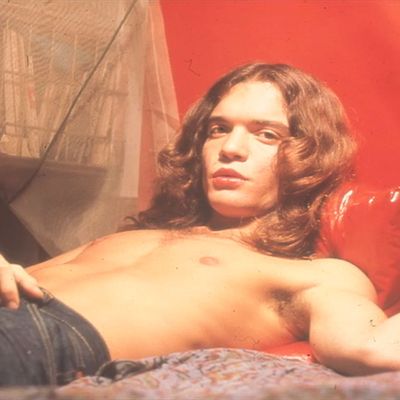
If you’re stuck in town without a beach to go to, the Hélio Oiticica retrospective, “To Organize Delirium,” at the Whitney Museum of American Art, might seem like the perfect summer show, because it brings its Brazilianness with it, some restless hippie-hammock sense of bright-colored, beautiful-boy-immersive romantic hijinx. It even recreates his most famous installation, called Tropicalia, where you can get sand between your toes (in the museum’s air-conditioning), and wander around the shacks he’d designed, and even come upon a live parrot in a cage. Oiticica, the son of an upper-class Brazilian family, first made it in 1967, when he was just 30 and a gay revolutionary idealist out to transcend the strictures of class and race which he’d become impatient with, or certainly didn’t fit with his eroticized sense of utopian possibility. These worlds he made might seem campy today, but were profoundly political at the time, when Brazil’s culture was coming apart at the seams. This was the late ’60s, after all, when suddenly the world’s seams became visible, and Brazil’s government responded by becoming increasingly authoritarian. In 1970, Oiticica visited New York, where he’d been included in a landmark MoMA show about conceptual art, and that year, using money from a Guggenheim Foundation fellowship, he moved to a loft at 81 Second Avenue, where these photographs were taken. There he built his own communal world: He called the subdivided, lofted space his Babylonests (for a while he sold cocaine to pay for it all, and, presumably keep the party going.) This is an excerpt of a slideshow the Whitney has on display, from 1973, called Neyrótika, of Oiticica and his lovers — there are 80 slides and they’re accompanied by a soundtrack from the radio and the artist reading Rimbaud poems — one of the most evocative pieces of what his life was like at the time. Oiticica returned to Brazil in 1978 and died, at just 42, in 1980.




